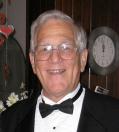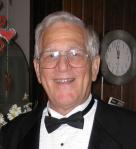Ascension Harmonics

(I’ve embedded a video clip for you to listen to while reading my blog meditation. Enjoy the harmonic sound track. It’s an F# Major chord, the frequency that I feel lifts up substance during meditation and attunement. This is the ancient Solfaggio Harmonic 741 Hz intended for expansion of consciousness. You may feel a pulsating pressure behind your eyes as the F# tone resonates within the Pineal Gland opening the sacred seal of the Third Eye, thereby releasing the radiant current of Love’s Light.)
(Use earphones for full spectrum sound resonance)
ARE WE ASCENDING YET ?
 I believe we are . . . ascending. At least the energy of the planet appears to be shifting to a higher frequency, and our bodies are very much a part of the planet, so they would also be ascending along with it. Is this an automatic process happening to us, or do we have any part to play in facilitating the process? I believe that both things are happening. Our bodies are being uplifted to a higher frequency and we have a part to play in the process—that is if we wish to take our bodies with us, which may well be possible one day, but not today. Presently, we can only take our spiritual bodies, our souls, with their subtle energy substance with us when we make our transition from the physical plane back to our origin in the realms of Light.
I believe we are . . . ascending. At least the energy of the planet appears to be shifting to a higher frequency, and our bodies are very much a part of the planet, so they would also be ascending along with it. Is this an automatic process happening to us, or do we have any part to play in facilitating the process? I believe that both things are happening. Our bodies are being uplifted to a higher frequency and we have a part to play in the process—that is if we wish to take our bodies with us, which may well be possible one day, but not today. Presently, we can only take our spiritual bodies, our souls, with their subtle energy substance with us when we make our transition from the physical plane back to our origin in the realms of Light.
The question Are we ascending? begs a question, and the answer would depend on who we are—or rather who we think we are. If we are referring to the incarnate beings we are in the spiritual sense, then I think there is a consensus among the awakened and enlightened that the beings we are already live at a higher level of being than the physical and, therefore, do not need to ascend. As for our physical bodies and outer being, which includes our human consciousness, that all needs to ascend to a higher vibrational frequency in order to continue its existence on a planet whose frequency is shifting to a higher vibration. And the only way that can happen is by the power of love emanating from within and permeating and resonating every tissue cell of our bodies.
It is the expression of a higher frequency energy through body, mind and heart that will lever the physical body up to a higher frequency. This is also true for the collective Body of Humanity. In this case, a critical mass is needed to provide that vibrational leverage.
In the Book of Revelation there is mention of a critical mass of a hundred and forty and four thousand standing on Mount Sion with the Lamb. This could be a vibrational value as well as a group number value. We know, for instance, that groups of people have meditated together and impacted world events, such as crime and weather patterns. Group chanting and toning has also been used in this way. It is the quality of love radiation, along with the quantity of individuals sharing in a unified radiation of love, that facilitates the lifting.
The refrain of a hymn from the Emissaries of Divine Light hymnal Songs of Praise and Thanksgiving comes to mind:
Sweet the lifting scent of worship To thy heart our love ascends. Oh what glory fills thy temple. From this place Thy word extends.”
LET LOVE DO THE WORK
In Biblical symbolism, the Lamb represents Jesus the Christ, the Lord of Love and proclaimed redeemer of mankind. Religious interpretations and creeds aside, what Jesus stood for, his personal mission and purpose for incarnating, was to bring love into the hearts of mankind. His expression through his human form was that of the highest frequency of love. His reference on every turn was to his heavenly Father. “The works that I do, I do not of myself, but the Father within me, he doeth the works.” His message was one of love. “If you love me, do as I command. Love one another as I have love you” and “Love your enemies; do good to those that hate you.” And, of course, there’s the first and second Great Commandments:
“Thou shalt love the LORD thy God with all of thy heart and all of thy soul, and with all thy mind, and with all thy strength.” And the second: “Thou shalt love thy neighbor as thyself.” (Mark 12:30)
The “Father within” is love. Here is what the author of Revelation, John the Beloved, wrote about the vision he was having:
And I looked, and, lo, a Lamb stood on the mount Sion, and with him an hundred and forty and four thousand, having his Father’s name written in their foreheads.” (Rev. 14:1)
We lead forth with the thoughts in our foreheads in everything we undertake to do. They are written as intentions in our brains. Our creative energies follow our thoughts to manifest those thought forms at lower frequencies so that we may see and enjoy them at the physical level.
Although we are told by health authors that we are what we eat, that isn’t the whole truth. We are also what we think and express. James Allen writes about this in his little book As A Man Thinketh.
The aphorism, “As a man thinketh in his heart so is he,” not only embraces the whole of a man’s being, but is so comprehensive as to reach out to every condition and circumstance of his life. A man is literally what he thinks, his character being the complete sum of all his thoughts.
Well, that’s not all a Man is, is it ? Man is a Human Being, a Being incarnate in human form. This aphorism indicates that a man thinks in his heart, not his mind. This is so, as we now know there are brain cells in the heart which communicate with cells in the brain. The Master Jesus apparently knew of this connection between heart and mind when he said “Out of the abundance of the heart the mouth speaks.”
THE HEART-BRAIN CONNECTION
Here are a few “Heart-Brain Factoids” from the Institute of Heartmath.

Your heart emits an electromagnetic field that changes according to your emotions. Others can pick up the quality of your emotions through the electromagnetic energy radiating from your heart.
The heart has a system of neurons that have both short- and long-term memory, and the signals they send to the brain can affect our emotional experiences. The heart sends more information to the brain than the brain sends to the heart. Coherent heart rhythms help the brain in creativity and innovative problem-solving.
With this knowledge of the heart-brain connection, it is easy to understand how love in our hearts can raise the vibrational frequency of the cells in our bodies. It doesn’t take much change in vibration upward—as little as half a pitch, like from F to F#—to make the body impervious to disease. Just a little more and the body will levitate. Just a bit more and the body cells will vibrate at the speed of love, which is light. And just a little more than the speed of light, the body will shift levels, become completely invisible to third-dimensional perception. So, you see, we are not very far from the fourth dimension vibrationally speaking. After we ascend to the fourth dimension, then ascension on upward into the fifth dimension, or density as some would have it, and further would be possible. Man was created on the sixth day in Genesis. Our Home, then, is at the level of the sixth heaven, just a little lower than the angels’ abode in God’s seventh heaven. There’s a Biblical reference to this in the Book of Psalms.
When I consider thy heavens, the work of thy fingers, the moon and stars, which thou hast ordained; What is man, that thou art mindful of him? And the son of man, that thou visitest him? For thou hast made him a little lower than the angel, and hast crowned him with glory and honour. (Psalm 8:3-5)
(Start the clip up again and go to Full Screen view for a seven minute sound attunement after you finish reading.)
There have been so many reminders of our place in the Divine Design and Cosmology. These Biblical passages have always intrigued me and drawn me to them in meditation. This one is one of my favorite.
The earth is the LORD’S, and the fullness thereof; the world, and they that dwell therein. For he hath founded it upon the seas, and established it upon the floods.
Who shall ascend into the hill of the LORD? or who shall stand in his holy place? He that hath clean hands and a pure heart; who hath not lifted up his soul unto vanity, nor sworn deceitfully. He shall receive the blessing from the LORD, and righteousness from the God of his salvation. This is the generation of them that seek him, that seek thy face, O Jacob.
Lift up your heads, O ye gates; and be ye lift up, ye everlasting doors; and the King of glory shall come in. Who is this King of glory? The LORD strong and mighty, the LORD mighty in battle. Lift up your heads, O ye gates; even lift them up, ye everlasting doors; and the King of glory shall come in. Who is this King of glory? The LORD of hosts, he is the King of glory. Selah.
The “LORD of host” could be the Lord Buddha, or the Lord Krishna, or any one of several deities and ascended masters in the many religions of the world. Addressing the Western world, I more naturally use Biblical references of the Christian scriptures. Readers are free to reference their own cultural beliefs and sacred scriptures. Whatever works for you. I respect all religious beliefs and sacred texts and I appreciate that my readers, wherever you are, respect the ones I reference in my blogs. Thank you.
THE PHYSIOLOGY OF ASCENSION
The body goes in the direction of the heart’s response. When the heart is open upward in utter abandon and perfect love response to the Lord of Love, and the head is lifted up with the mind focused in the highest image one may have of the Lord of Love, “the King of glory,” the body cells begin to vibrate at a higher frequency in resonance with the frequency of Love. Love can then fill the heart to overflowing. “And the King of glory shall come in.” The heart sends a message to the brain, which sends a message to the hypothalamus, which in turn sends messages via hormone precursors to the seven endocrine glands, which are the “seven seals” of the book of life. According to the author of Revelation, only the Lamb can open the seven seals of the book of life. The Lamb is Love.
The vibration of Love moving in and through the heart opens the vibrational gateways—“ye gates and everlasting doors”––of the seven endocrine glands releasing powerful hormones that go forth into the body and raise the frequency of the cells. In an instant, the body begins to rise up off the ground in ecstatic fusion with the God Being incarnate. The cycle of ascension is thus initiated. The angel takes his or her body-temple up to the next level.
From my own personal experience, this is the way it works. There are no techniques, sound or otherwise, that can initiate this process. Harmonic sound can attune energy and subtle substance and facilitate its movement through the chakra and endocrine centers. As I mentioned at the start, I find that the F# Major chord as played in the clip does move energy upward in an ascending spiral. The Father within, however, “He doeth the works.” Love God with all.
Thank you for following my blogs and for sharing these heartfelt thoughts and meditations. I welcome your thoughts.
~Anthony
tpal70@gmail.com

 Our conscious presence in a cosmic context has been more vividly and visually brought to our awareness, as well as recalled to remembrance, by pictures of the vast cosmos made with the Hubble Telescope and shared with the world by our tenaciously adventurous astronomers who keep peering deeper and deeper into the “dark space” around us.
Our conscious presence in a cosmic context has been more vividly and visually brought to our awareness, as well as recalled to remembrance, by pictures of the vast cosmos made with the Hubble Telescope and shared with the world by our tenaciously adventurous astronomers who keep peering deeper and deeper into the “dark space” around us. 







